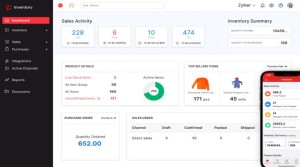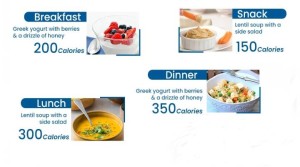The Benefits of Using a One-Rep Max Calculator
Find out how knowing your 1RM can facilitate creating customized training schedules, monitoring your progress, and guaranteeing safer training.

Building muscle, increasing power, and sculpting your physique - these are all common goals in the gym. But how do you know you're lifting the right weights to achieve them?
Step into the One-Rep-Max (1RM) Calculator, a great machine capable of helping you to improve your strength. However, what is a real 1RM? A calculator can assist you to just maximize the benefits, as well. Strap on your fitness pursuits as we plunge deep into 1RMs and examine the multiple advantages of utilizing a one-rep-max calculator.
Understanding the 1RM - Your Strength Benchmark
One-Repetition-Maximum (1RM) is the highest weight you can lift, that means one single repetition of a particular exercise. In essence, it tracks your pure strength without your assistance in utilizing any equipment. Think of it as your own personal everest - the most excessive weight that you can bear for just one repetition.
Why Does Knowing Your 1RM Matters?
So, why should you care about your 1RM? Here's the key - knowing your 1RM allows you to design personalized workout plans that target specific goals. Here's how it benefits.
- Targeted Training
The majority of advanced strength training programs use percentages of your 1RM as a base to calculate weight. These percentages represent the intended training goals and are derived from the formulas. Conversely, training for 8-12 reps with 70-80% of your maximum weight will foster the growth of muscles, and training with 1-6 reps with a 90-100% of your maximum weight power will only boost your maximum strength.
- Progression Tracking
The 1RM serves as a benchmark to track your progress over time. As you get stronger, your 1RM will increase, indicating your growing muscular strength. This provides valuable data to adjust your workout program and keep challenging yourself.
- Safer Training
It is very important for you to realize your own limits in order to do lifting properly and without injuries. Overloading the body with weights that too hard might cause a much-affected injury. One way to that can be done is by using one-repetition-maximum (1RM) calculator as well as by training with appropriate weight percentages (percentages that take injury risk lowers and effectiveness higher), it is also possible to minimize injury risk and improve the overall effectiveness of the training at the same time.
The Power of the One-Rep-Max Calculator
Next, let's discuss the wondrous things that the 1RM calculator does. Attempting to lift the real 1RM implies to moving a maximum possible burden, which can be dangerous, especially for starters. This is where the calculator comes in handy as it takes away slow and tedious calculations.
- Convenience and Safety
A 1RM calculator allows you to estimate your 1RM based on the weight you can comfortably lift for a specific number of repetitions (usually between 5-8 reps). This eliminates the need for risky max-effort attempts, making it a safer approach for most gym-goers.
- Different Methods, Similar Benefits
There are various 1RM calculator formulas online, each with slightly different approaches. Some popular methods include the Brzycki formula, the Epley formula, and the Mayhew formula. While the exact calculations may differ, the overall benefit remains - a safe and convenient way to estimate your 1RM.
Also Read: Exploring the Benefits of a Percentage Calculator
Beyond the Basics - Advanced Calculator Features
Many 1RM calculators offer additional features to enhance your workout planning. Look for calculators that do the following.
- Account for Different Exercises
There isn't a single 1RM for every exercise. Some calculators allow you to choose specific exercises, like squats, dead-lifts, or bench presses, for a more accurate estimation.
- Consider Training Experience
A beginner will have a different 1RM compared to a seasoned lifter. Some calculators factor in your training experience to refine the estimation.
- Offer Rep Range Recommendations
Once you estimate your 1RM, the calculator might suggest appropriate rep ranges based on your training goals (e.g. building muscle, increasing strength, improving power).
In conclusion, the 1RM calculator is a valuable tool that can empower you to take charge of your strength training journey. By providing a safe and convenient way to estimate your 1RM, it allows you to design personalized workout plans that target your specific goals, track your progress over time, and train smarter, not harder. Remember, the 1RM calculator is a starting point. Couple it with proper form, progressive overload (gradally increasing weight or reps over time), and a healthy diet to maximize your results and reach your full potential in the gym. So, ditch the guesswork, embrace the 1RM calculator, and unlock your inner strength machine!
If you're interested in exploring additional calculators, check out CoolCalculator for a variety of useful tools.

Building muscle, increasing power, and sculpting your physique - these are all common goals in the gym. But how do you know you're lifting the right weights to achieve them?
Step into the One-Rep-Max (1RM) Calculator, a great machine capable of helping you to improve your strength. However, what is a real 1RM? A calculator can assist you to just maximize the benefits, as well. Strap on your fitness pursuits as we plunge deep into 1RMs and examine the multiple advantages of utilizing a one-rep-max calculator.
Understanding the 1RM - Your Strength Benchmark
One-Repetition-Maximum (1RM) is the highest weight you can lift, that means one single repetition of a particular exercise. In essence, it tracks your pure strength without your assistance in utilizing any equipment. Think of it as your own personal everest - the most excessive weight that you can bear for just one repetition.
Why Does Knowing Your 1RM Matters?
So, why should you care about your 1RM? Here's the key - knowing your 1RM allows you to design personalized workout plans that target specific goals. Here's how it benefits.
- Targeted Training
The majority of advanced strength training programs use percentages of your 1RM as a base to calculate weight. These percentages represent the intended training goals and are derived from the formulas. Conversely, training for 8-12 reps with 70-80% of your maximum weight will foster the growth of muscles, and training with 1-6 reps with a 90-100% of your maximum weight power will only boost your maximum strength.
- Progression Tracking
The 1RM serves as a benchmark to track your progress over time. As you get stronger, your 1RM will increase, indicating your growing muscular strength. This provides valuable data to adjust your workout program and keep challenging yourself.
- Safer Training
It is very important for you to realize your own limits in order to do lifting properly and without injuries. Overloading the body with weights that too hard might cause a much-affected injury. One way to that can be done is by using one-repetition-maximum (1RM) calculator as well as by training with appropriate weight percentages (percentages that take injury risk lowers and effectiveness higher), it is also possible to minimize injury risk and improve the overall effectiveness of the training at the same time.
The Power of the One-Rep-Max Calculator
Next, let's discuss the wondrous things that the 1RM calculator does. Attempting to lift the real 1RM implies to moving a maximum possible burden, which can be dangerous, especially for starters. This is where the calculator comes in handy as it takes away slow and tedious calculations.
- Convenience and Safety
A 1RM calculator allows you to estimate your 1RM based on the weight you can comfortably lift for a specific number of repetitions (usually between 5-8 reps). This eliminates the need for risky max-effort attempts, making it a safer approach for most gym-goers.
- Different Methods, Similar Benefits
There are various 1RM calculator formulas online, each with slightly different approaches. Some popular methods include the Brzycki formula, the Epley formula, and the Mayhew formula. While the exact calculations may differ, the overall benefit remains - a safe and convenient way to estimate your 1RM.
Also Read: Exploring the Benefits of a Percentage Calculator
Beyond the Basics - Advanced Calculator Features
Many 1RM calculators offer additional features to enhance your workout planning. Look for calculators that do the following.
- Account for Different Exercises
There isn't a single 1RM for every exercise. Some calculators allow you to choose specific exercises, like squats, dead-lifts, or bench presses, for a more accurate estimation.
- Consider Training Experience
A beginner will have a different 1RM compared to a seasoned lifter. Some calculators factor in your training experience to refine the estimation.
- Offer Rep Range Recommendations
Once you estimate your 1RM, the calculator might suggest appropriate rep ranges based on your training goals (e.g. building muscle, increasing strength, improving power).
In conclusion, the 1RM calculator is a valuable tool that can empower you to take charge of your strength training journey. By providing a safe and convenient way to estimate your 1RM, it allows you to design personalized workout plans that target your specific goals, track your progress over time, and train smarter, not harder. Remember, the 1RM calculator is a starting point. Couple it with proper form, progressive overload (gradally increasing weight or reps over time), and a healthy diet to maximize your results and reach your full potential in the gym. So, ditch the guesswork, embrace the 1RM calculator, and unlock your inner strength machine!
If you're interested in exploring additional calculators, check out CoolCalculator for a variety of useful tools.
Conversation
Latest Blogs
© Blog CoolCalculator, Explore CoolCalculator, your destination for the latest insights, tips, and updates on the world of online calculators. Stay informed and make your calculations smarter with our blog. ,
Designed
by Saad Media Team , Team Lead M.Rizwan Akhtar












